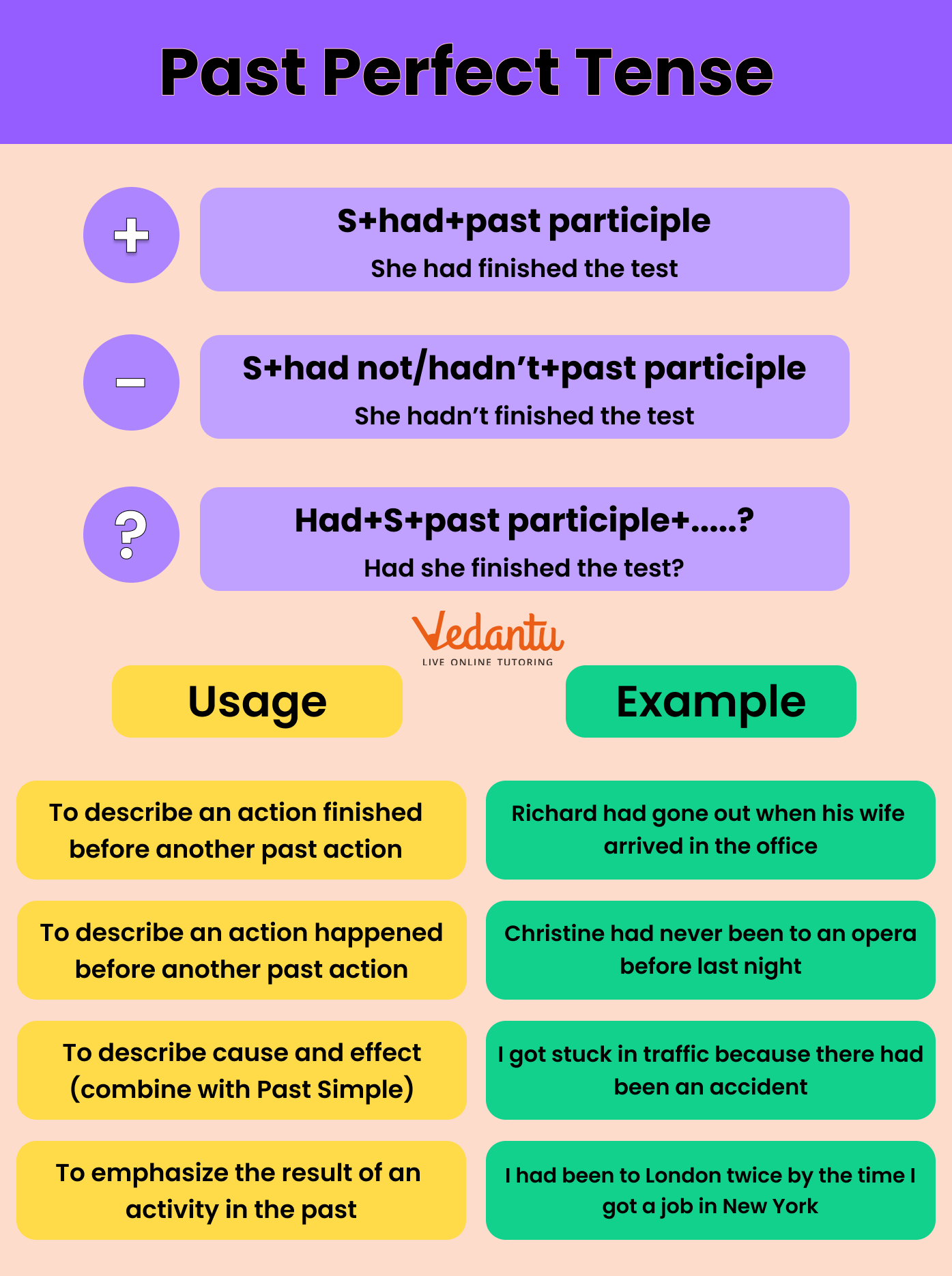




Past Perfect Tense: Overview, Definition, Formula, Applications, and Examples
FAQs on Past Perfect Tense: Rules and Examples
1. What is the Past Perfect Tense?
The Past Perfect Tense shows that one action happened before another action in the past.
2. How do you form the Past Perfect Tense?
Use 'had' followed by the past participle of the main verb. For example, "had finished."
3. When do you use the Past Perfect Tense?
Use it to show that an action was completed before another past action. For example, "She had left before he arrived."
4. Can you give an example of a positive sentence?
"They had eaten dinner before the movie started."
5. How do you make a negative sentence in the Past Perfect Tense?
Add 'not' after 'had.' For example, "She had not finished her homework."
6. How do you form a question in the Past Perfect Tense?
Start with 'had,' then add the subject and past participle. For example, "Had they arrived by 7 PM?"
7. What’s the difference between Past Perfect and Simple Past Tense?
The Past Perfect Tense shows an action happened before another past action. The Simple Past Tense shows an action that happened at a specific time in the past.
8. Can you use the Past Perfect Tense with 'when' and 'after'?
Yes, it shows the order of events. For example, "When he had finished, he went to bed."
9. Can the Past Perfect Tense be used in stories?
Yes, it helps set the scene by showing what happened first. For example, "He had lived in Paris before he moved to London."
10. How do you use the Past Perfect Tense in reported speech?
Use it to show an action happened before what was reported. For example, "She said she had seen the movie."
11. Is the Past Perfect Tense used with regular and irregular verbs?
Yes, just use 'had' and the correct past participle form. For example, "had played" (regular) and "had written" (irregular).
12. Can you use the Past Perfect Tense for plans that didn't happen?
Yes, it shows actions that were planned but not done. For example, "I had planned to go, but I stayed home."























